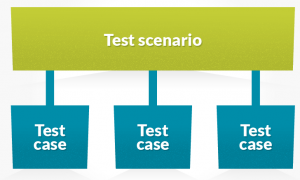Testing in an agile context refers to a team of Quality Assurance (QA) team of tester(s) who perform rigorous and meticulous examination, assessment and verification of each of the completed developed functionalities against the story’s acceptance criteria, which is usually defined by the Product Owner (PO).
It will require the tester to have knowledge of how things work from end to end (meaning how it comes from the source and how it ends up as an output of the process).
The process of testing in an agile environment should entail the following steps :



- Defects management : QA team will usually perform a manual testing of the completed stories in the Staging environment (assuming that developers have completed their unit testing in the Development environment). This is called System Integration Testing (SIT).
Once the SIT is completed, QA tester will inform PO. A user acceptance testing (UAT) session will then be scheduled by PO with the relevant users. Sometimes, a training or briefing session will be held with the users (if they are unfamiliar with the system) before UAT session. The users will begin testing the test cases based on scenarios agreed and sign off the UAT test scripts once it is completed successfully (after all agreed UAT defects are fixed). - Test scenarios : Forms an important basis for a successful release based on the acceptance criteria of stories in sprint. Most of the time, this depends on the knowledge of the QA tester of the system and thoroughness of the test cases created for the SIT and UAT.
- Test cases and test acceptance : Test cases (and test scripts) are written based on what the QA has tested during SIT and is used to prepare for business users. This will usually be shared with the scrum team and business users before the actual start of UAT so that it can be reviewed and any missed out test scenarios can be added.
- Stakeholder UAT sign off : This is an important part of the testing process as this is where the actual testing is done by the users and verified as working as expected. In organizations where audit is a high priority, this must be signed off either physically or digitally on the master test sheet and indicating whether each step was tested successfully.
Disclaimer: What I am sharing is purely from my point of view and does not reflect anyone else’s. What I present in my posts doesn’t necessarily mean tat it is applicable to your work, organization and culture. Would love to hear from you if you have any different opinions or feedback.







